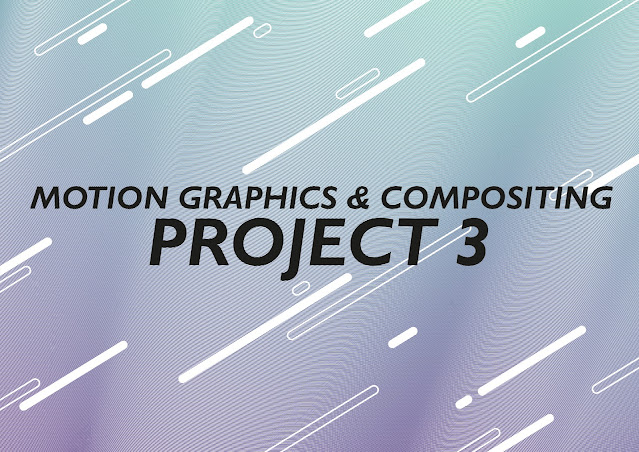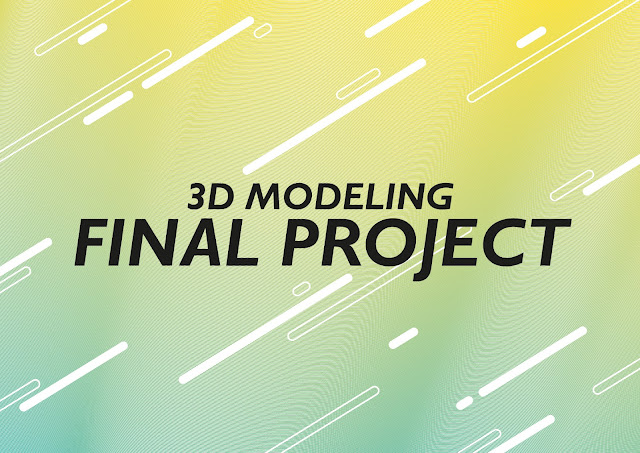Project 1
3 May 2019 - 10 May 2019 (week 05-week 06)
Soo Wen Yi (0334653)Typography _
Project 1/Text Formatting and Expression
LECTURES_
Lecture 05 _ Letters/Understanding Letterforms
3 May 2016 (week 05)
My last week's further reading on the article has helped me to understand and it also ties into today's lecture which is helpful.
- Most alphabets suggest symmetry, but its not
- serif, one side is heavier
- sans-serif, some are symmetrical some are not
- Letters like Helvetica and Univers (a), their differences may seem insignificant but its important
- S must be rise above the median line/sink below the baseline
- this is because if its normal sized within the baseline and the median line, only small section of the top and bottom will touch it, it will optically look smaller
- Counter form, is the form in the negative space
- balance of positive and negative space is important
- Contrast, creates hierarchy of information (important when dealing with large amount of information
- light/bold
- condensed/extended
- organic/machined
- roman/italic
- small/large
- serif/sans-serif
- ornate/simple
- red/blue
- Learning, asking why/analyse the type, try to understand it
Additional notes taken during introduction of InDesign:
Lecture 06 _ No Lecture
10 May 2019 (week 06)
This week we didn't have a lecture, instead we used the time to make sure the blog is all in the correct format and then move on to complete project 1.
Notes that are taken during the class:
- Leading, space between lines
- Leading = point size+3
- 40 - 60 character count in a line (window - view - info)
- horizontal grid, layout - create guides - rows
- Formatting text, don't have islands of text box, format it within the guides
- Paragraph, to change multiple things into forced line break, change all paragraph back to 0
3 May 2016 (week 05)
My last week's further reading on the article has helped me to understand and it also ties into today's lecture which is helpful.
- Most alphabets suggest symmetry, but its not
- serif, one side is heavier
- sans-serif, some are symmetrical some are not
- Letters like Helvetica and Univers (a), their differences may seem insignificant but its important
- S must be rise above the median line/sink below the baseline
- this is because if its normal sized within the baseline and the median line, only small section of the top and bottom will touch it, it will optically look smaller
- Counter form, is the form in the negative space
- balance of positive and negative space is important
- Contrast, creates hierarchy of information (important when dealing with large amount of information
- light/bold
- condensed/extended
- organic/machined
- roman/italic
- small/large
- serif/sans-serif
- ornate/simple
- red/blue
- Learning, asking why/analyse the type, try to understand it
Additional notes taken during introduction of InDesign:
 |
| Fig. 1.1: notes page 1. |
 |
| Fig. 1.2: notes page 2. |
 |
| Fig. 1.3: notes page 3. |
Lecture 06 _ No Lecture
10 May 2019 (week 06)
This week we didn't have a lecture, instead we used the time to make sure the blog is all in the correct format and then move on to complete project 1.
Notes that are taken during the class:
- Leading, space between lines
- Leading = point size+3
- 40 - 60 character count in a line (window - view - info)
- horizontal grid, layout - create guides - rows
- Formatting text, don't have islands of text box, format it within the guides
- Paragraph, to change multiple things into forced line break, change all paragraph back to 0
INSTRUCTIONS_
PROJECT 1_
Week 05
Project 1
We started our first project today with InDesign. We are required to make an editorial spread with a section of an article: First Things First Manifesto 2000. After reading the article, I had a rough understanding that they are trying to change the way designers are prioritising certain things in the advertising fields. And that they should shift their attention and use their skills for a more useful and impactful topics like educational tools or cultural interventions.
To start off, I did some sketches just to put down some layout ideas.
After that I continue onto designing the spread on InDesign. We are asked by Mr Vinod to do 3 layout designs.
For design 1, I have put changed. repeatedly on the background of the first page to hint on the context of the article.
For design 2, I wanted to emphasise on the word first by including the number and making an overall very strong contrasted page.
For design 3, I tried to do a 4 paged spread and played around with the amount of space on one page since the contents are not condensed into a single page.
Week 06
Project 1 continue
Project 1
We started our first project today with InDesign. We are required to make an editorial spread with a section of an article: First Things First Manifesto 2000. After reading the article, I had a rough understanding that they are trying to change the way designers are prioritising certain things in the advertising fields. And that they should shift their attention and use their skills for a more useful and impactful topics like educational tools or cultural interventions.
To start off, I did some sketches just to put down some layout ideas.
 |
| Fig. 2.1: spread sketches. |
 |
| Fig. 2.2: another spread sketch. |
 |
| Fig. 2.3: Design 1 page 1 |
 |
| Fig. 2.4: Design 1 page 2 |
 |
| Fig. 2.5: Design 2 page 1 |
 |
| Fig. 2.6: Design 2 page 2 |
 |
| Fig. 2.7: Design 3 page 1 |
 |
| Fig. 2.8: Design 3 page 2 |
 |
| Fig. 2.9: Design 3 page 3 |
 |
| Fig. 2.10: Design 3 page 4 |
For design 3, I tried to do a 4 paged spread and played around with the amount of space on one page since the contents are not condensed into a single page.
Week 06
Project 1 continue
 |
| Fig. 2.11: Design 4 spread |
 |
| Fig. 2.12: Design 5 spread |
 |
| Fig. 2.14: Design 7 spread |
 | ||||
| Fig. 2.15: Design 8 spread
After getting feedback from Mr Vinod, I experimented with the layout.
|
FEEDBACK_
Week 05
General feedback
Mr Shamsul remind us that our blog must be formatted correctly and images should be in good quality.
Week 06
General feedback
Mr Vinod advise us to edit our blogs on incognito mode (private browser), and always have backups of the blog's content on Microsoft Word. He also told us that if we don't format it properly/correctly, it could lead us to a failing grade.
Specific feedback
Mr Shamsul looked at my blog and told me to be aware of the spacings through my blog. Some paragraph spacings are too big, before an image the paragraph before should have a space. Other than that its fine and I can move onto working on the project 1. Mr Vinod told me to look at references. Avoid absolute diagonal on the number 1. Since so much is expressed on one side, avoid expressing so much on the other side of the spread. From Google sheet: Label (Typography) your Project 1 post, otherwise it doesn't show up.
General feedback
Mr Shamsul remind us that our blog must be formatted correctly and images should be in good quality.
Week 06
General feedback
Mr Vinod advise us to edit our blogs on incognito mode (private browser), and always have backups of the blog's content on Microsoft Word. He also told us that if we don't format it properly/correctly, it could lead us to a failing grade.
Specific feedback
Mr Shamsul looked at my blog and told me to be aware of the spacings through my blog. Some paragraph spacings are too big, before an image the paragraph before should have a space. Other than that its fine and I can move onto working on the project 1. Mr Vinod told me to look at references. Avoid absolute diagonal on the number 1. Since so much is expressed on one side, avoid expressing so much on the other side of the spread. From Google sheet: Label (Typography) your Project 1 post, otherwise it doesn't show up.
REFLECTION_
EXPERIENCES
Week 05
Today's class was interesting but quite overwhelming with the amount of new information that came with the new software we had to use (Adobe InDesign).
Week 06
I've fixed minor problems on my blog after Mr Shamsul's feedback, and moved onto improving my design before asking for feedback.
Week 06
I've fixed minor problems on my blog after Mr Shamsul's feedback, and moved onto improving my design before asking for feedback.
OBSERVATIONS
Week 05
I can't note down on my book as fast as every steps that are shown on the projector.
Week 06
I didn't ask the lecturers to check my designs at the start.
Week 06
I didn't ask the lecturers to check my designs at the start.
FINDINGS
Week 05
I since then took some pictures with my phone to help me see better and also record an image which is easier to look back to the steps if I get stuck.
Week 06
Since there's a lot of students in the class, they are always occupied and I didn't have a chance to ask them at the start. But I was able to get my feedback later in the class.
Week 06
Since there's a lot of students in the class, they are always occupied and I didn't have a chance to ask them at the start. But I was able to get my feedback later in the class.
FURTHER READING_
Week 05
Calligraphy: Tools & Techniques for the Contemporary Practitioner by Gaye Godfrey-Nicholls |
| Fig. 3.1: book cover. |
Design And Decoration: Chapter 9 Layout and Composition
I have always been drawn to calligraphy and I do own dip pens with nibs but I haven't had a proper try to write with it. So I was a little sad that the previous senior's calligraphy excersise has been removed for us since we don't have enough time. I was drawn to the calligraphy section in the library when I saw it. I decided to read this chapter as it is related to what we are doing for this project and gave a further understanding to layout.
- shapes and flourishing used can help enhance the layout
- the proper use of white space can balance the composition
- elements has clear relationship with nearby elements (contributes to overall balance)
- balance can be symmetrical, asymmetrical and nesting
- movements, how does the eye travel
 |
| Fig. 3.2: page from book. |
 |
| Fig. 3.3: example from book. |
Week 06
Basics Design 02: Layout (Second edition) by Gavin Ambrose and J. P. Harris
This book includes great examples and also a summary of the topics at the end of the book. The section that I've read is Developing the grid. I've learnt that tight images or texts can be framed by the white borders which creates contrast. Grids provide consistency but doesn't make the elements look static. Using a grid allow for better accuracy in the placement of elements on a page or spread. It is also useful for making sure that everything work together within the overall design.
Basics Design 02: Layout (Second edition) by Gavin Ambrose and J. P. Harris
 |
| Fig. 3.4: book cover |
 |
| Fig. 3.5: section book spread |
 |
| Fig. 3.6: example from the book |

















Comments
Post a Comment